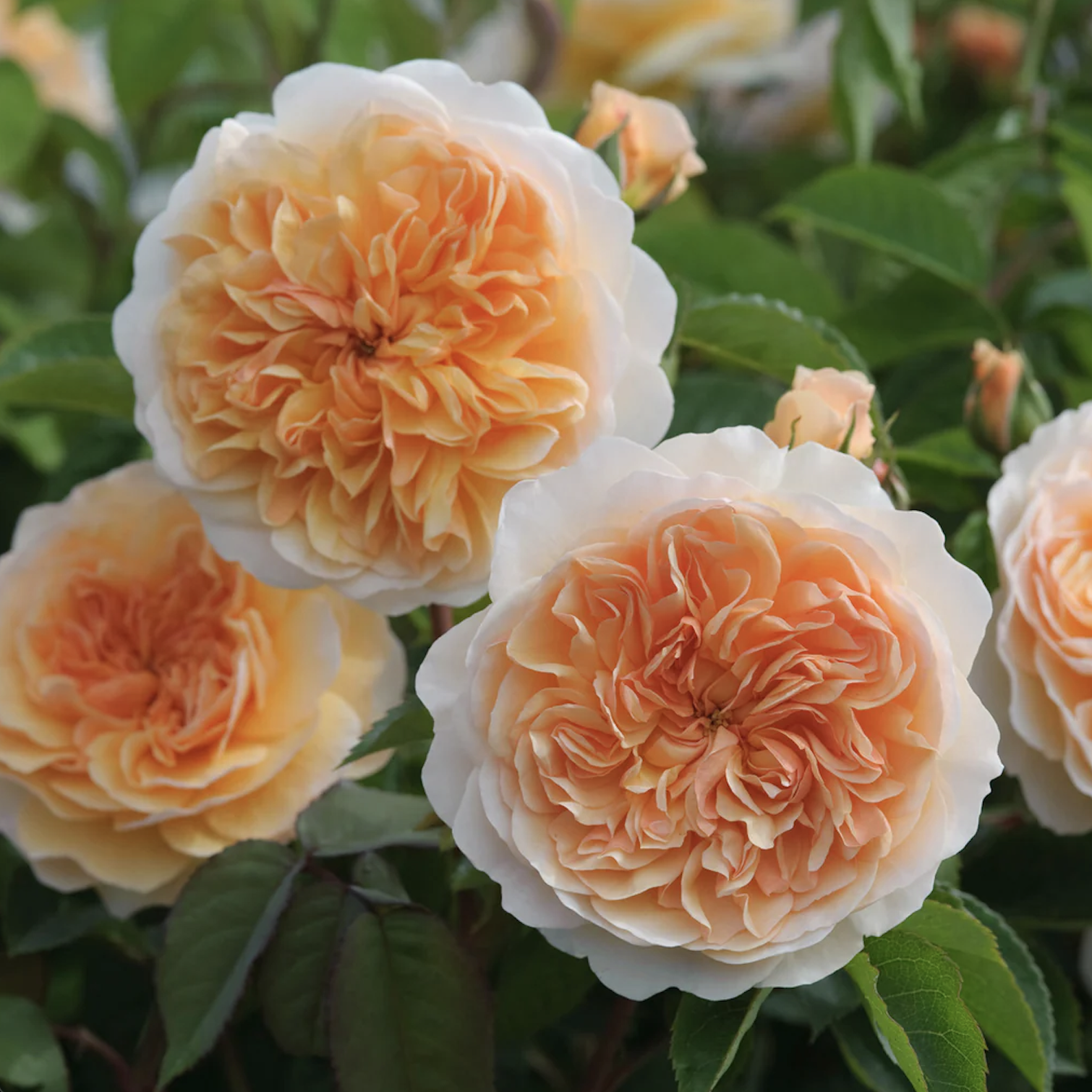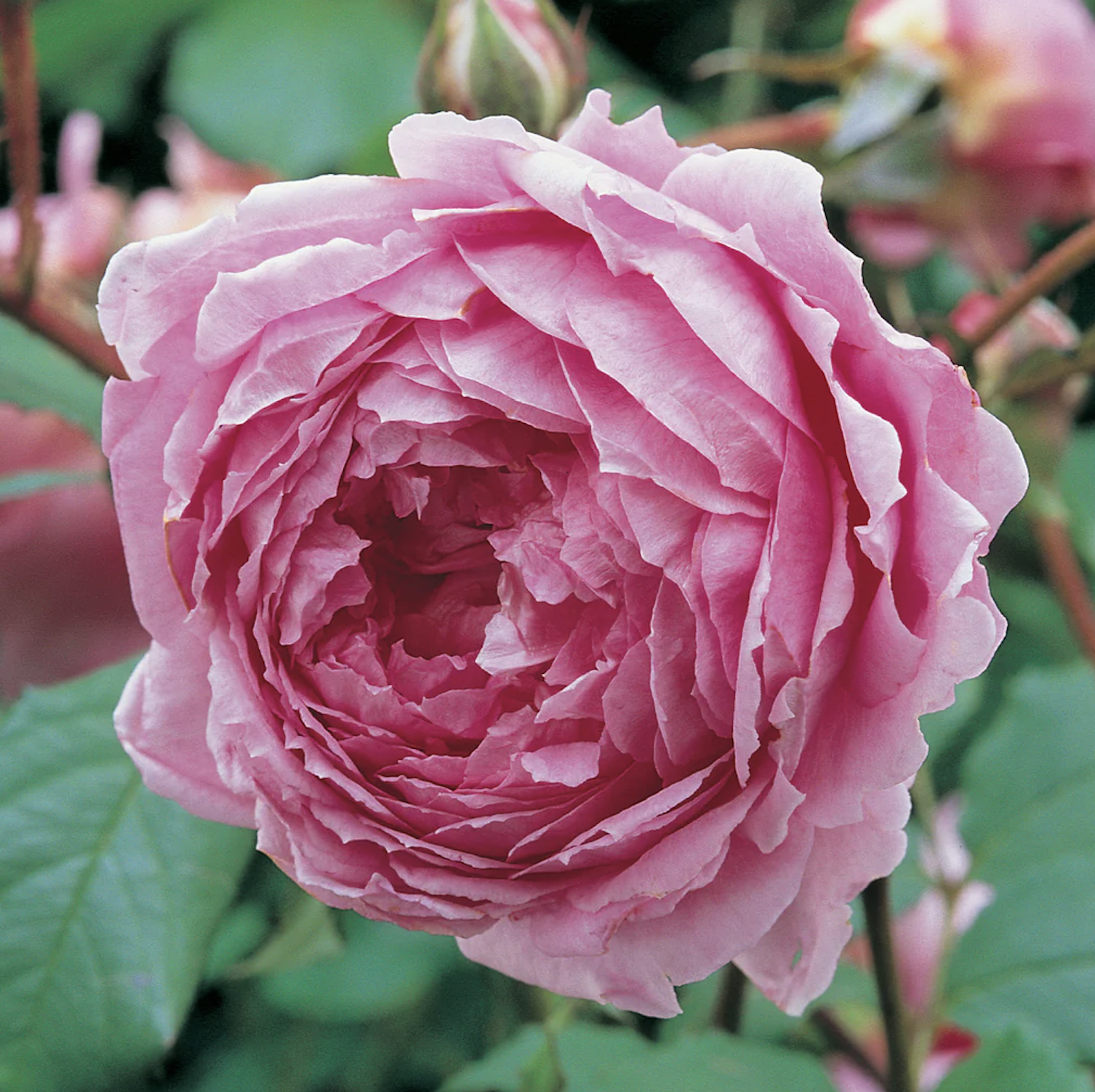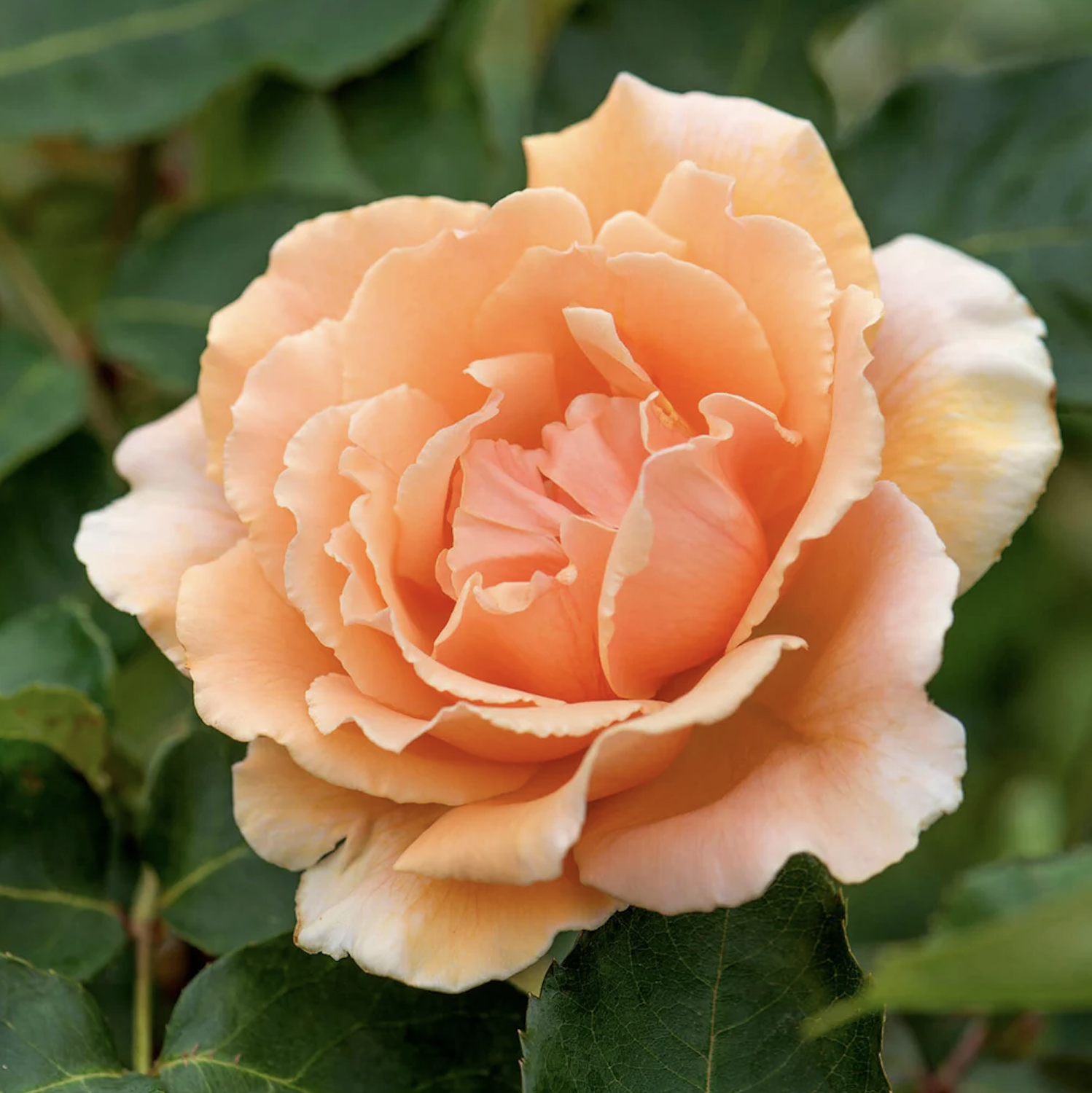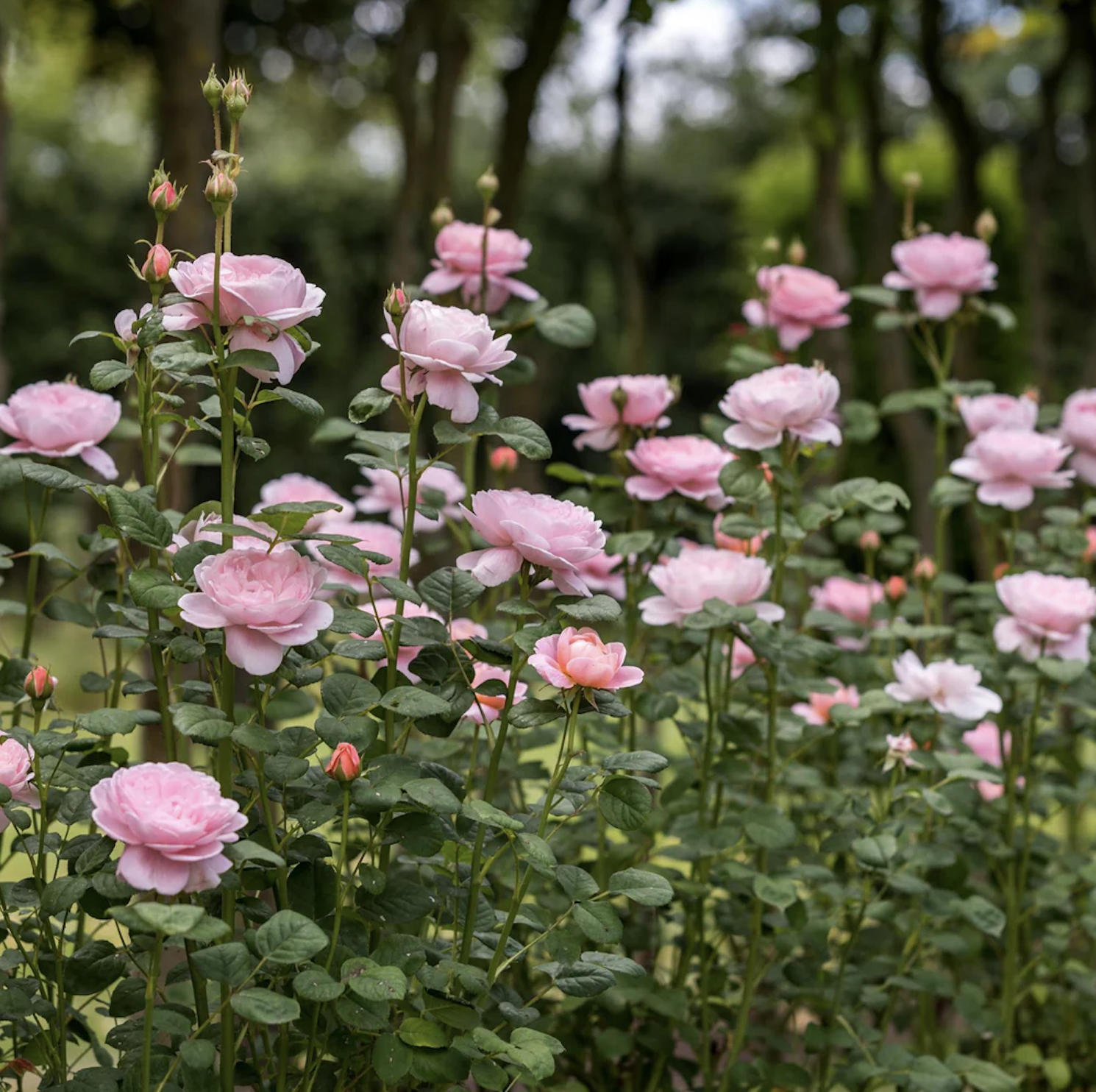David Austin’s English Roses
The principles of the ideal English Rose includes beauty of form, purity of color, pleasing natural growth, attractive foliage, and strong fragrance. Other characteristics, such as reliability and health, must also be present, and its a combination of qualities that determines the nature of an English Rose. It is not enough, for example, that English Roses should produce blooms of vaguely Old Rpse shape. It would not be difficult to visualize giant, blowsy, brightly colored flowers such as these, with no particular virtue other than their sheer size and brilliance.
What we need to discern is the essence of the rose, the special qualities that have given the rose its unique place in our hearts.
The flower of an English Rose may also be beautiful in the bud, though it is not usually “scrolled”, as is the case in the Hybrid Tea. It is generally more in the nature of a pretty, small cup. The flower gradually opens in a succession of appealing stages until it is completely open-and only then is its full splendor revealed. It will hold its beauty for some time, for as the outer petals die, the inner petals remain fresh. English Roses have comparatively long-lasting flowers, making them very suitable for cutting.
The basic shape of an English Rose is a “rosette” the form that the rose first evolved when it was developed from a wild species into a garden rose by the doubling of its petals. Such doubling is due to the fact that the stmens of all kinds of plants, not only of roses, freqently mutate naturally into petals. The term “rosette”, meaning “like a rose,” may seem an odd one to apply to roses, but it does show far the Modern Rose with its high-centered flower has deviated from the rose’s original form. A typical rosette can take on many forms: it may be closely packed with small petals, or more loosely packed with larger petals.
Flat Rosette Port Sunlight David Austin Rose
Deep Cup Huntington Rose David Austin Rose
Pom Pom Hyde Hall David Austin Rose
Single Sally Holmes David Austin Rose
Hybrid Tea Just Joey David Austin
Shallow Cup Queen of Sweden
Semi-Double Buttercup David Austin Rose
In some varieties of English Rose, the petals toward the center fail to open normally and become folded, while the outer petals open completely. This type of flower is described as being quartered. In another type, the small petals at the centre of the flower remain folded in the shape of a button, hence the term “button eye”. Flowers may have various forms opening either flat or with a slight turn up at the edges to give a more shallow cup, petals may turn down at edges to form a dome.
In a large-petaled variety the flowers may form a round “cup” or “chalice.” When there are no inner petals, so that the stamens within are visible, it is an “open cup”. The more usual form is when it is filled with loyts of small petals. A “full cup” is when the cup is brimming with petals. When the cup is brimming with petals. When the petals “incurve” to form a ball or globe, we refer to the shape of the flower as “globular”. “Deeply domed” petals turn down instead of incurving.
No two varities will have exactly the same form of flower. Roses constantly changing with age. It may begin as a very definite “cup,” and end its life as a “rosette.”







